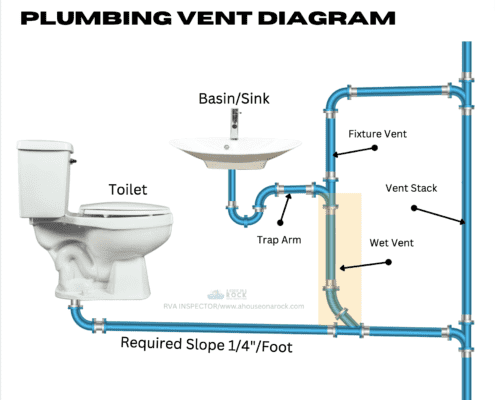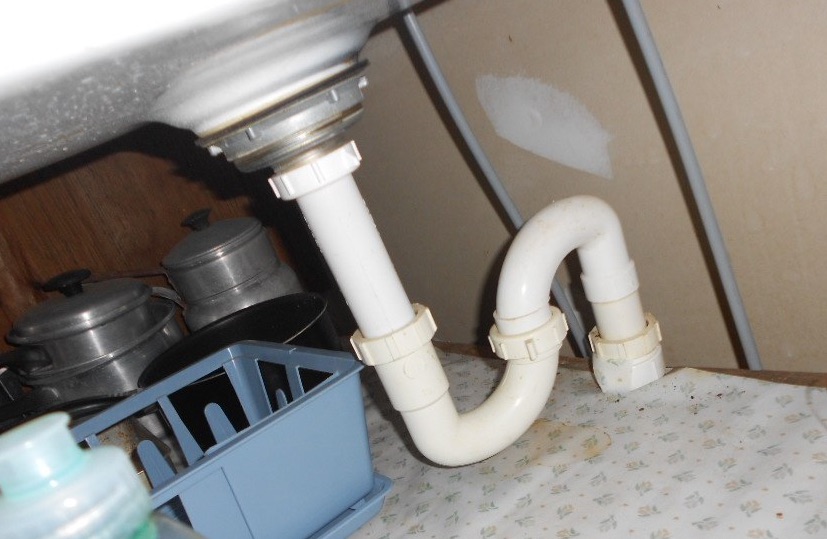The Essential Role of Correct Ventilation in Plumbing Systems
The Essential Role of Correct Ventilation in Plumbing Systems
Blog Article
We have noticed this great article involving Essential Plumbing Vent Pipes: Understanding Their Role down the page on the web and felt it made good sense to share it with you here.

Proper air flow in pipes systems is often forgotten, yet it is important for preserving the performance and security of your home's plumbing. Ventilation helps regulate atmospheric pressure, protect against the build-up of unsafe gases, and make certain the effective removal of waste. In this guide, we will certainly check out the importance of proper pipes ventilation, just how it works, and the benefits it gives your plumbing system.
Just How Ventilation Functions in Pipes Equipments
Atmospheric Pressure Regulation
Correct air flow keeps well balanced atmospheric pressure within the pipes system. When water streams through pipes, it displaces air. Without adequate air flow, this variation can develop adverse pressure, causing slow drains pipes or siphoning of water from traps, which can trigger unpleasant smells to seep right into the home.
Avoiding Sewer Gas Build-up
Among the most crucial features of plumbing vents is to stop drain gases, such as methane and hydrogen sulfide, from accumulating within the home. These gases can posture major health risks and are extremely combustible. Vent pipes enable these gases to escape safely outdoors.
Aiding in Waste Removal
Air flow aids in the efficient removal of wastewater by protecting against airlocks in the drainage system. When air can flow easily with the vents, it permits water and waste to move smoothly through the pipes, minimizing the threat of obstructions and back-ups.
Advantages of Correct Ventilation
Enhanced System Efficiency
Appropriately aerated plumbing systems operate a lot more successfully, with less blockages, faster draining pipes, and much less strain on the pipelines. This efficiency prolongs the life-span of the plumbing system.
Improved Air High Quality
By protecting against sewer gases from entering your home, appropriate air flow adds to better indoor air quality, making your living environment healthier and much more comfortable.
Stopping Water Damage
Appropriate ventilation aids stop water from being siphoned out of traps, which can cause sewer gases getting in the home and causing water damages over time.
Steps to Ensure Appropriate Air Flow
Consulting Plumbing Codes
Constantly get in touch with regional pipes codes when designing or customizing your pipes system. These codes provide the required standards for correct venting and ensure your system satisfies safety and security standards.
Normal Evaluation and Upkeep
Normal evaluations can help determine potential air flow concerns before they come to be significant troubles. Maintenance tasks, such as cleansing vent pipelines and looking for clogs, are necessary for maintaining the system in good working order.
Professional Setup
For brand-new installations or significant modifications, it's important to hire a specialist plumber. They have the competence to make sure the ventilation system is properly created and mounted according to code.
Recognizing Air Flow in Pipes
Ventilation in pipes refers to the network of pipes that enable air to stream with the water drainage system. These vents serve numerous objectives, consisting of controling air pressure within the pipes, preventing sewer gases from getting in the home, and aiding in the smooth flow of wastewater.
Kinds Of Plumbing Vents
Main Stack Vent
The major stack vent, also known as the vent pile, is the key vent in a plumbing system. It expands from the primary drain align with the roofing system, allowing gases to escape and fresh air to get in the system.
Branch Vent
Branch vents link to the major stack vent and offer individual fixtures, such as sinks, bathrooms, and showers. These vents make certain that each fixture has sufficient ventilation to work appropriately.
Air Admission Shutoff (AAV).
An Air Admission Shutoff (AAV) is a one-way shutoff that permits air to get in the pipes system without the requirement for a typical air vent pipeline expanding through the roof. AAVs are commonly utilized in improvements or areas where mounting a conventional air vent is not practical.
Indicators of Poor Air Flow in Plumbing.
Slow Draining Fixtures.
If your sinks, bathtubs, or commodes are draining pipes slowly, it could be a sign of poor ventilation. Insufficient air circulation can develop a vacuum result, making it tough for water to drain effectively.
Gurgling Sounds.
Gurgling audios originating from drains pipes are commonly a result of air being drawn via water traps as a result of negative pressure in the pipelines. This is a clear indication of inadequate air flow.
Undesirable Odors.
Drain smells inside your home are a warning that your plumbing system is not appropriately aerated. This could imply that drain gases are not being adequately vented outside, resulting in potentially hazardous problems.
Typical Ventilation Errors.
Inadequate Vent Sizing.
Making use of small air vent pipelines can bring about poor air circulation and pressure discrepancies in the system. It's essential to use vents that meet the specific needs of your pipes system.
Improper Vent Placement.
Positioning vents too much from the components they serve can lower their efficiency. Proper placement guarantees that air can move easily and efficiently via the system.
Ignoring Code Requirements.
Building ordinance supply specific standards for plumbing ventilation. Ignoring these codes can lead to a system that fails to work appropriately and may bring about costly repair services or carcinogen.
Conclusion.
Appropriate air flow is a vital part of any plumbing system, making sure that it operates efficiently and safely. By recognizing the relevance of ventilation, acknowledging the signs of inadequate ventilation, and taking actions to keep your system, you can prevent pricey issues and protect your home's air quality.
4 Things You Should Know About Your Plumbing Vents
What Plumbing Vents Are
Also called a vent stack, a plumbing vent is a vertical pipe attached to your drain line that runs through your roof. The plumbing vent pipe, or plumbing air vent, removes gas and odors from your plumbing system and allows fresh air to enter the pipes, helping the water to flow out of the drain pipes.
What Plumbing Vents Do
Plumbing vents have two basic functions. One of which is to allow unpleasant smelling wastewater and sewer gasses to escape your plumbing system instead of entering your home. Plumbing vent pipes are typically located on roofs, away from windows, to ensure the fumes exit the home completely.
The other function of the plumbing vent is to move fresh air into your plumbing system. This helps move water through every plumbing fixture in your house, like toilets and sink drains. Think of the way in which you need to let a little air into the bottle as you pour soda in order to make the drink flow smoothly.
Different Types of Plumbing Vents
True vent: This is the most common vent option. In simplest terms, a true vent is a vertical pipe attached to your drain line that exits through the roof. They often function as the main vent that other fixtures can connect to. Re-vent pipe or auxiliary vent: Attached to the drain line near specific plumbing fixtures, re-vent pipes run up and over to connect to the main vent. Common vent: Two plumbing fixtures installed on opposite sides of a wall are typically tied into the vent stack using something known as a sanitary cross. Wet vent: This venting option operates as a drain pipe and a vent at the same time. Wet vent drainage systems drain water from one fixture while venting the air from another. Although they’ve been used for over 100 years, wet vent systems have only recently been added to the plumbing code in many areas. If you’re planning on installing one in a bathroom remodel, make sure you check your local code prior to construction. Loop vent: For free-standing fixtures like kitchen island sinks, loop vents are ideal. These vent pipes run under the floor, rise from the P-trap, and create a loop inside the cabinet sink. Air admittance valve: An AAV is a one-way mechanical valve typically installed at the site of the plumbing fixture. AAVs allow venting to occur without having to tie into a larger venting system. They’re ideal for venting fixtures where you aren’t able to easily connect to an existing vent system. Common Plumbing Vent Issues
Although vent pipes typically don’t have water flowing through them, they’re still subject to many typical plumbing issues. For example, clogs are one of the most common problems associated with sewer vent pipes. If your vent pipe gets clogged, all of your plumbing fixtures tied into the vent stack will be affected.
A sink with a slow drain that bubbles and gurgles or a strong sewage smell around your toilet are both indicators that your toilet vent pipe is clogged. Because most vent pipes exit through the roof, old leaves, twigs or even a bird’s nest could be clogging the pipe.
Clogs in your vent pipe system cause a buildup of negative pressure, meaning that water won’t be able to flow out of your home very well. It’s similar to putting your finger over the opening of a straw to trap water inside. When you remove your finger, the water is able to flow out of the straw.
If you suspect you have any blockage in your vent, make sure you have a professional come examine the situation. Left unchecked, a blocked air vent can lead to other costly repairs, like leaks and sediment buildup.
Under Pressure
Pipe vents are essential aspects of a home’s plumbing system. Owning a home means learning about all sorts of things you never put much thought into before. But by understanding as much as you can about the important systems of your home, you can keep those budgets intact and those anxiety levels low.
https://www.homeserve.com/en-us/blog/home-improvement/plumbing-vents/

We were shown that report about What Is A Plumbing Vent & How Do They Work? from someone on another web page. Liked our post? Please quickly share it. Help another person discover it. Thank you so much for going through it.
Prices & Booking Report this page